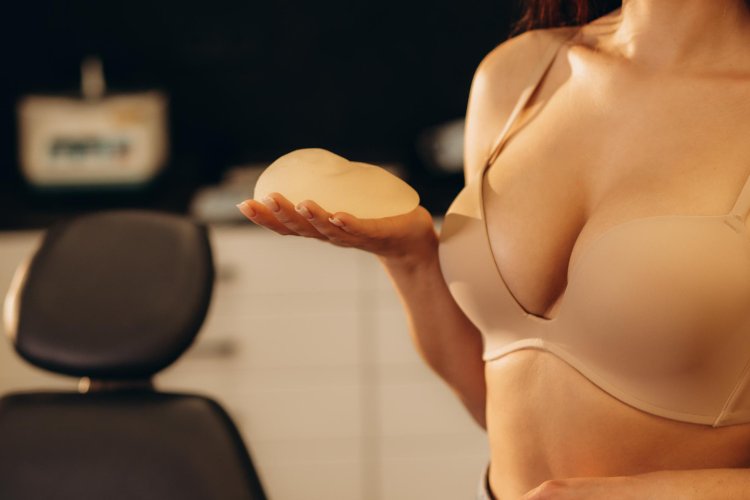Plastic Breast Surgery: Enhancing Aesthetics, Health, and Confidence
Plastic breast surgery, encompassing a range of procedures like breast augmentation, reduction, and lifts, is a specialized field in cosmetic and reconstructive surgery. These procedures are tailored to meet diverse needs, from aesthetic enhancements to alleviating physical discomfort. With advancements in medical technology and surgical techniques, plastic breast surgery has become increasingly safe and effective, offering individuals transformative results. This article delves deeper into each type of breast surgery, discussing techniques, benefits, risks, and considerations.

Breast Augmentation: Sculpting Ideal Contours
Breast augmentation, or augmentation mammoplasty, involves increasing the breast size through implants or fat transfer. This procedure can enhance the fullness and projection of the breasts, improve the balance of a patient's figure, and boost self-confidence.
Implants
The most common method involves using silicone or saline implants. Silicone implants are filled with a silicone gel that feels more like natural breast tissue. Saline implants are filled with sterile salt water and offer a uniform shape, firmness, and feel. Both types of implants have distinct advantages and potential drawbacks.
Fat Transfer
This method involves liposuction to take fat from other parts of the body, which is then purified and injected into the breasts. This technique is often preferred for those seeking a more natural augmentation without synthetic implants.
Surgical Techniques
The procedure typically involves an incision made in inconspicuous areas to minimize visible scarring. Incision options include:
- Inframammary incision: Under the breast fold.
- Periareolar incision: Around the nipple.
- Transaxillary incision: In the armpit.
The surgeon then inserts the implant either under the pectoral muscle (submuscular placement) or directly behind the breast tissue (subglandular placement).
Recovery and Results
Post-surgery, patients may experience swelling and soreness for a few weeks. Recovery time varies, but most can return to normal activities within a few weeks. Results are immediately visible, with final outcomes seen as swelling subsides.
Breast Reduction: Alleviating Physical Strain
Breast reduction, or reduction mammoplasty, is designed for women with excessively large breasts that cause physical discomfort such as back and neck pain, skin irritation, and posture issues. The procedure removes excess breast fat, glandular tissue, and skin to achieve a breast size in proportion with the body and alleviate discomfort.
Techniques
- Liposuction: Suitable for minor reductions and patients whose skin will retract after the fat removal.
- Vertical or “Lollipop” Reduction: Involves a circular incision around the areola and a vertical incision down to the breast crease.
- Inverted-T or “Anchor” Reduction: Involves three incisions – around the areola, vertically down to the breast crease, and along the breast crease.
Benefits
This surgery not only improves physical symptoms but also enhances the ability to participate in physical activities and improves overall body image.
Recovery
Patients typically experience swelling and bruising for a few weeks. Pain is managed with medication, and most can resume normal activities within a month.
Breast Lift: Restoring Youthful Contours
Breast lift, or mastopexy, addresses sagging breasts by removing excess skin and tightening the surrounding tissue to reshape and support the new breast contour. Factors like aging, gravity, pregnancy, breastfeeding, and weight fluctuations can lead to loss of skin elasticity, causing the breasts to sag.
Techniques
- Crescent Lift: A small amount of skin is removed from above the areola, ideal for minimal sagging.
- Periareolar or “Donut” Lift: Involves a circular incision around the areola, suitable for mild to moderate sagging.
- Vertical or “Lollipop” Lift: For moderate sagging, involving incisions around the areola and vertically down to the breast crease.
- Inverted-T or “Anchor” Lift: For significant sagging, involving three incisions similar to the breast reduction technique.
Combining Procedures
A breast lift can be combined with augmentation or reduction to achieve desired size and firmness.
Recovery
Similar to other breast surgeries, recovery involves managing swelling and discomfort. Patients are usually able to resume normal activities within a few weeks, though strenuous activities should be avoided for a longer period.
Risks and Considerations
All surgical procedures carry risks, and plastic breast surgery is no exception. Potential risks include:
- Infection: Post-surgical infections can occur, requiring antibiotics or additional surgery.
- Scarring: While incisions are made in inconspicuous areas, some visible scarring is inevitable.
- Changes in Sensation: Temporary or permanent changes in nipple or breast sensation.
- Implant Issues: Leakage or rupture of implants, requiring additional surgery.
- Unsatisfactory Results: Asymmetry, improper size, or shape, necessitating revision surgery.
Consultation
A thorough consultation with a board-certified plastic surgeon is essential. The surgeon will evaluate the patient’s health, discuss goals, and explain the best surgical options and potential outcomes.
Preparation and Aftercare
Pre-surgery preparation includes medical evaluations and avoiding certain medications. Post-surgery care involves follow-up appointments, wearing supportive garments, and adhering to activity restrictions.
In conclusion, plastic breast surgery, whether for augmentation, reduction, or lifting, offers significant physical and psychological benefits. These procedures can enhance breast appearance, alleviate discomfort, and improve overall quality of life. With individualized treatment plans and advancements in surgical techniques, plastic breast surgery continues to evolve, providing safer and more effective options for those seeking to enhance their body image and confidence.
Disclaimer: The information provided in this article is for educational purposes only and should not be considered medical advice. If you have any health concerns or are experiencing symptoms, it is important to consult with a healthcare professional, such as a doctor or clinic, for proper diagnosis and treatment. Always seek the advice of your doctor or other qualified health provider with any questions you may have regarding a medical condition. Do not disregard professional medical advice or delay in seeking it because of something you have read in this article.
What's Your Reaction?





















